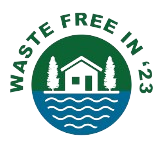Biomass Energy as a Catalyst for Sustainability: Advances, Gaps & WasteFree23 Synergies
A recent review by Philip Mensah and Eric Yankson, published in Academia Green Energy, analyzes how biomass energy that is derived from crop residues, animal waste, and forest biomass is contributing to global sustainability goals. The article compares case studies from seven countries (China, India, Denmark, Germany, Brazil, Namibia, and Ghana) and explores four major biomass conversion technologies: combustion, pyrolysis, gasification, and anaerobic digestion.
Their findings show that biomass can help achieve multiple Sustainable Development Goals (SDGs), especially:
SDG 7 – Affordable and Clean Energy: Biomass helps electrify rural areas and reduce dependence on fossil fuels.
SDG 8 – Decent Work and Economic Growth: Biomass projects create jobs in farming, processing, and energy production.
SDG 13 – Climate Action: Biomass energy lowers carbon emissions when managed sustainably.
SDG 15 – Life on Land: Biomass use (e.g., Namibia’s bush-to-energy programs) can help restore degraded land.
However, the report also shows challenges: high costs, limited infrastructure, inefficient policy frameworks, and uneven technology access, especially in African countries. While countries like Germany and Denmark use high-tech biomass systems (including nanotechnology and AI-driven optimization), many developing nations still rely on basic combustion, lacking access to even modest pyrolysis or anaerobic systems
However, the article does not talk much about some important topics—like how energy production can work together with other systems (called “synergies”) or the difference between low-tech and high-tech solutions. These missing points matter a lot because the world is running out of resources, struggling with waste, and facing serious climate problems.

For example, the article includes a table about fermentation (a process that breaks down organic material), but it doesn’t explain the value of the leftover material, called “digestate.” This digestate is very useful—it can feed Black Soldier Fly Larvae, which are used to make:
- Natural fertilizer rich in nutrients (NPK),
- Animal and fish feed,
- Biodiesel (a cleaner fuel).
A great article explaining these combined benefits is published recently. See our easy summary on BSFL systems here.
Other methods like pyrolysis and gasification also produce valuable leftovers. One important byproduct is biochar, a kind of charcoal. Biochar is becoming more valuable because it helps fight climate change by capturing carbon from the air.
Building high-tech systems for pyrolysis can be expensive. But there are much cheaper options. For example, digging a simple trench, using a monotube boiler, and a locally made turbine can generate electricity. While this setup isn’t the most efficient, it costs only about $500 per kilowatt (kW) of electricity—much less than most modern systems.
Why is this important? Each year, over 1 billion tonnes of crop waste are burned without creating any useful energy. High-tech systems are too costly or complex for most farmers to use. That’s why low-cost, low-tech solutions—like the $500/kW pyrolysis system—are so important. They allow farmers, villages, and local communities to:
- Stop open burning of crop waste (which pollutes the air),
- Generate clean electricity,
- Create biochar, which locks away carbon and improves soil in many areas.
In summary, to make a real impact on climate change and waste management, we must support simple, affordable energy solutions that work for everyday people—not just large companies or rich countries.
🧭 Next Steps and Related WF23 Pages
Explore WF23’s Biochar for Spanish Coffee Farmers Guide: Biochar Training Module
Read a full training guide on BSFL: Insect Farming Centre’s guide
Join Our Certification Course: Waste Free ’23 Webinar Program
Got questions?
